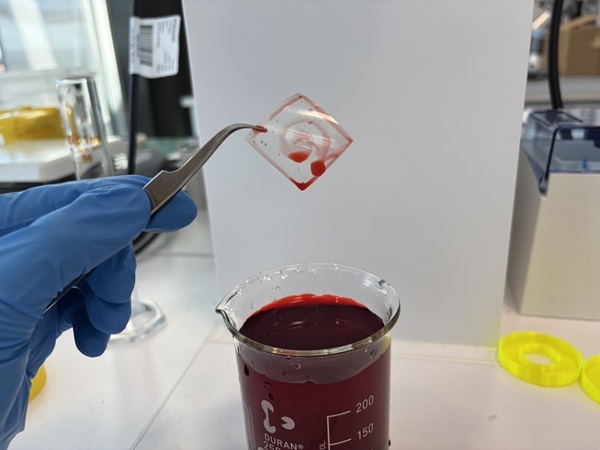In 2022,1.882 million patients with valvular heart disease valvular heart disease were treated, according to the China Cardiovascular Health and Disease Report 2023. Medical devices such as heart valves and stents play a vital role in saving lives. However, proteins in the blood may adhere to the surface of the medical implant and accumulate and form thrombus over time, often requiring an invasive procedure to remove or replace the implant.
Researchers at the University of Sydney are developing a double-charged ion coating that could help extend the life of implants by preventing blood clots from forming on medical devices such as catheters and stents.

Double-charged ion coating materials developed by researchers at the University of Sydney (University of Sydney)
In a recent review published in the journal cell biomaterials, the team explored the potential of doubly charged ions in biomedicine, providing an in-depth blueprint for the design of surface coating technologies. “Medical implants are constantly under pressure in the body. The heart valve needs to withstand high pressure to pump blood, opening and closing billions of times over 10 years,” said Dr Sina Naficy from the University of Sydney’s School of Chemistry and biomedical engineering, who led the development team. “The average lifespan of existing heart valve implants is less than 10 years and there is always a risk of regression or complications. By using a doubly charged ion coating material, we aim to reduce the risk of blood clots and extend the life of heart valves and other medical implants,” he said.
The world is full of positively and negatively charged molecules. Their interactions drive the chemical processes of life. A doubly charged ion is a unique molecule that is both positively and negatively charged and is neutral. Doubly charged ions are already present in our cells, are part of the cell membrane, and create a thin layer of water on the cell membrane that ensures the flow of blood and other proteins through the heart and other organs, without adhering to other surfaces.
Inspired by this, Dr NAFIC and his team have focused on the chemically neutral and hydrophilic properties of doubly charged ions, and are trying to mimic them, to design materials that can extend the life of medical implants. Now, the team has created a double-charged ion coating that is just a few nanometers thick and can form a film of water on the surface of the material, protecting it like armor, water is repelled and diffused beyond the boundaries of the material. “We are currently exploring new formulations that can be attached to any type of implant, whether made of tissue, metal, plastic or rubber, with the aim of reducing their interaction with the blood,” says Dr Sepehr Talebian of the University of Sydney’s School of Chemistry and biomedical engineering.
However, one of the greater challenges facing scientists today is how to determine the best use of doubly charged ions, including determining the ideal thickness of the coating and the concentration to be used. “We can’t just immerse the prosthetic heart valve in a doubly charged ionic substance without studying the optimal conditions. Too much may aggravate clots, too little and the risk remains,” says Dr Talebian.
He further said that the research team is working hard to find the best conditions for such macromolecules to realize their full potential, this includes studying how to“Fix” the doubly charged ions on the surface of the material and the optimum conditions for them, including finding the optimum concentration of salt in the solution because too much salt will cause the doubly charged ions to clump together and the researchers want them to be evenly distributed on the surface.